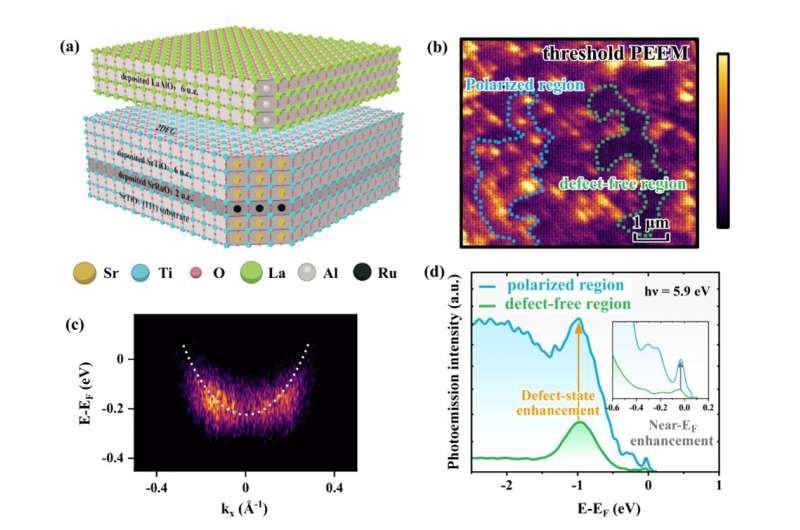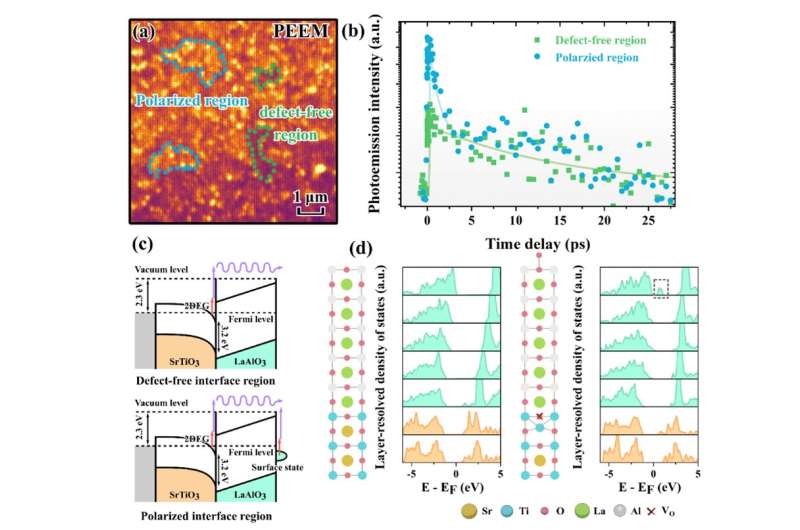Defect dynamics at the buried interface revealed by photoemission electron microscopy

In recent years, LaAlO3/SrTiO3 interface is found to be an ideal host for two-dimensional electron gas (2DEG). Such heterostructures have attracted extensive interests in recent years due to their various fascinating properties such as high electron mobility, superconductivity, and tunable spin-orbit coupling effect.
However, the driving physical mechanism behind such fancy effect is still in debt. The most common theory for the 2DEG formation is the so called "polar catastrophe" model, where 2DEG is attributed to the polar discontinuity between the two materials. Yet, recent reports of 2DEG on SrTiO3 bare surface revealed the importance of oxygen vacancies in the 2DEG formation process, while those defects at the buried interface are beyond the applicable range of traditional charactering methods.
The authors of this article address one of the most debated conundrums in SrTiO3 (STO) based heterostructures: the conflicting magnitude of the electron density of the 2DEG in experiments and the so called "polar catastrophe" model. This conclusion is based on the local and time-resolved photoemission study of the oxygen vacancies influence for the 2DEG of an STO based heterostructures.
In more detail, they succeeded in controlling the density of the 2D electron gas (2DEG) of the LaAlO3/SrTiO3 interface by generating Ti-Sr anti-site defects in the SrTiO3 layer which create localized nano-regions in the buried interface. Using time-resolved and energy-resolved photoemission electron microscopy, they provide substantial evidence that oxygen vacancies are induced near those polar sites, resulting in an increased carrier density of the 2DEG. Crucially, the relative strength of these electron sources is directly linked to the oxygen vacancies at the interface offering a unique possibility to control the 2DEG of such semiconductor heterostructures. Their results prove that the electron density of the 2D electron gas is attributed to more than one mechanism which hence reveals the coexistence of various electrons sources at the LaAlO3/SrTiO3 interface.
Such finding will lay the foundation for promoting the implementation of novel electronic devices based on SrTiO3-related 2DEG. In particular, the design guidelines to control the electron density of 2DEGs of polar-nonpolar interfaces will set the stage for exploring more exotic phenomena of the 2DEG in device concepts such as superconductivity or magnetism of 2DEG.

More information: Junyan Chen et al, Tracing the formation of oxygen vacancies at the conductive LaAlO3/SrTiO3 interface via photoemission, Opto-Electronic Science (2022). DOI: 10.29026/oes.2022.210011
Provided by Compuscript Ltd



















